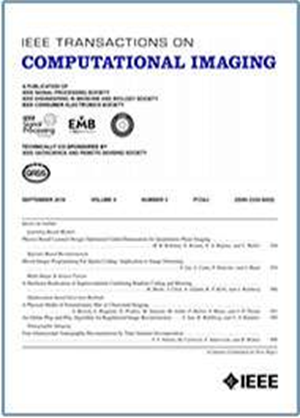Quick Unsupervised Hyperspectral Dimensionality Reduction for Earth Observation: A Comparison
IF 4.8
2区 计算机科学
Q2 ENGINEERING, ELECTRICAL & ELECTRONIC
引用次数: 0
Abstract
Dimensionality reduction can be applied to hyperspectral images so that the most useful data can be extracted and processed more quickly. This is critical in any situation in which data volume exceeds the capacity of the computational resources, particularly in the case of remote sensing platforms (e.g., drones, satellites), but also in the case of multi-year datasets. Moreover, the computational strategies of unsupervised dimensionality reduction often provide the basis for more complicated supervised techniques. In this work, eight unsupervised dimensionality reduction algorithms are tested on hyperspectral data from the HYPSO-1 earth observation satellite. Each particular algorithm is chosen to be representative of a broader collection of methods. Our extensive experiments probe the computational complexity, reconstruction accuracy, signal clarity, sensitivity to artifacts, and effects on target detection and classification of the different algorithms. No algorithm consistently outperformed the others across all tests, but some general trends regarding the characteristics of the algorithms did emerge. With half a million pixels, computational time requirements of the methods varied by 5 orders of magnitude, and the reconstruction error varied by about 3 orders of magnitude. A relationship between mutual information and artifact susceptibility was suggested by the tests. The relative performance of the algorithms differed significantly between the target detection and classification tests. Overall, these experiments both show the power of dimensionality reduction and give guidance regarding how to evaluate a technique prior to incorporating it into a processing pipeline.对地观测快速无监督高光谱降维:比较
降维可以应用于高光谱图像,以便更快地提取和处理最有用的数据。这在数据量超过计算资源能力的任何情况下都是至关重要的,特别是在遥感平台(如无人机、卫星)的情况下,但在多年数据集的情况下也是如此。此外,无监督降维的计算策略往往为更复杂的监督降维技术提供了基础。在对地观测卫星HYPSO-1的高光谱数据上,对8种无监督降维算法进行了测试。每个特定的算法都被选为更广泛的方法集合的代表。我们广泛的实验探讨了不同算法的计算复杂度、重建精度、信号清晰度、对伪影的敏感性以及对目标检测和分类的影响。没有一个算法在所有测试中始终优于其他算法,但是关于算法特征的一些一般趋势确实出现了。在50万像素的情况下,方法的计算时间变化了5个数量级,重建误差变化了3个数量级左右。结果表明,互信息与工件敏感性之间存在一定的关系。在目标检测和分类测试中,算法的相对性能存在显著差异。总的来说,这些实验既显示了降维的力量,也为如何在将技术纳入处理管道之前对其进行评估提供了指导。
本文章由计算机程序翻译,如有差异,请以英文原文为准。
求助全文
约1分钟内获得全文
求助全文
来源期刊

IEEE Transactions on Computational Imaging
Mathematics-Computational Mathematics
CiteScore
8.20
自引率
7.40%
发文量
59
期刊介绍:
The IEEE Transactions on Computational Imaging will publish articles where computation plays an integral role in the image formation process. Papers will cover all areas of computational imaging ranging from fundamental theoretical methods to the latest innovative computational imaging system designs. Topics of interest will include advanced algorithms and mathematical techniques, model-based data inversion, methods for image and signal recovery from sparse and incomplete data, techniques for non-traditional sensing of image data, methods for dynamic information acquisition and extraction from imaging sensors, software and hardware for efficient computation in imaging systems, and highly novel imaging system design.
 求助内容:
求助内容: 应助结果提醒方式:
应助结果提醒方式:


